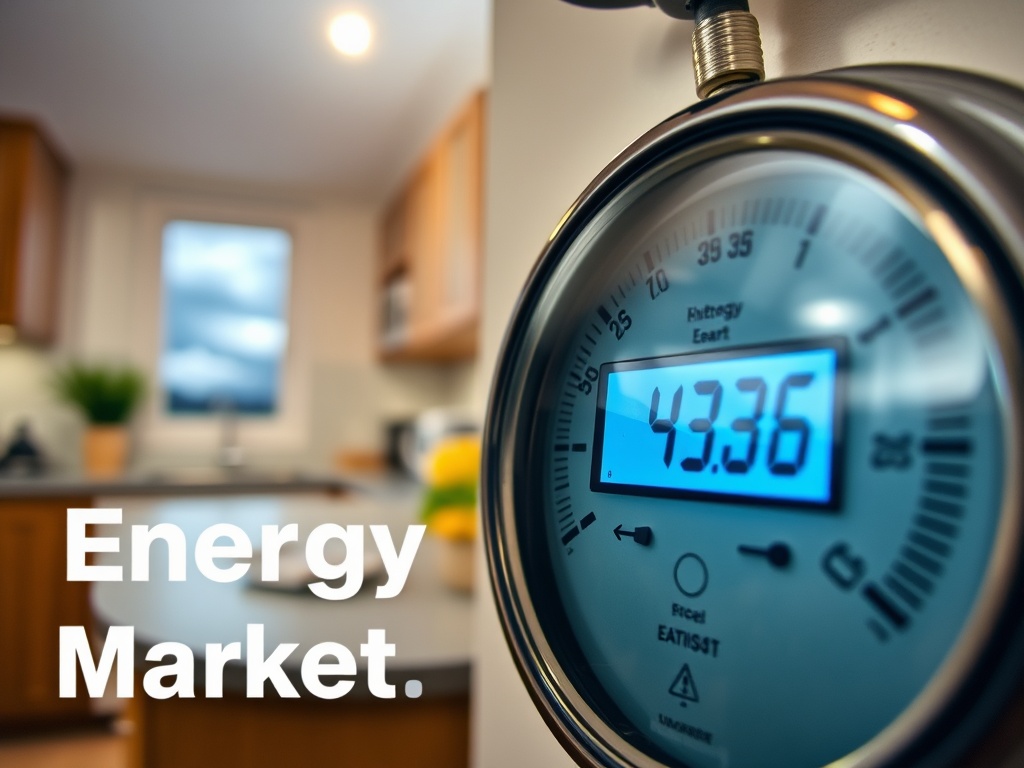Households are preparing themselves for yet another financial strain as energy bills are projected to rise significantly. This week, energy regulator Ofgem is expected to announce the new energy price cap that will be effective from April to June of this year. While the specifics of the announcement are still pending, energy analysts from Cornwall Insight are forecasting an increase of up to 5 percent, translating to roughly £7 more per month for the average consumer.
Dr. Craig Lowrey, a principal consultant at Cornwall Insight, commented, “Households have faced considerable challenges over the last few months, and with bills set to increase for a third consecutive time, the financial pressure is relentless. Although we are not returning to the peak crisis levels seen previously, the market is currently more volatile than it has been in quite some time. Households are particularly vulnerable to the effects of cold weather and reduced gas storage levels across Europe.”
In light of this impending increase, many consumers may be contemplating switching to a fixed tariff as a strategy to mitigate the impact on their household expenses. Here’s a closer look at the details and guidance available.
What is the Energy Price Cap?
The energy price cap, established by Ofgem, is reviewed quarterly throughout the year. This cap places a limit on the amount suppliers can charge per unit of gas or electricity and is based on the average costs incurred to deliver energy to homes. It also establishes a maximum daily standing charge, which is the fee for being connected to the energy grid.
It’s important to note that the cap does not restrict the total bill; the actual amount a household pays depends on their energy consumption. The caps are applicable only to consumers on a standard variable energy tariff, and do not apply to those on fixed-rate tariffs.
The current energy price cap, effective from January 1 to March 31, 2025, is set at £1,738 annually for a typical household that uses both electricity and gas and pays via Direct Debit. This represents a modest increase of 1.2 percent from the previous cap set between October 1 and December 31, 2024, which was £1,717.
Ofgem is expected to announce the next price cap for the period of April 1 to June 30, 2025, by Tuesday, February 25. Cornwall Insight anticipates that this cap will rise by 5 percent, bringing it to £1,823 per year for a typical dual-fuel household. This increase would amount to an additional £85 for the average consumer, marking a third consecutive rise in the price cap and suggesting that the situation may not improve in the near future.
Additionally, energy supplier EDF predicts an even higher increase to £1,855 annually, slightly exceeding Cornwall Insight’s estimate.
Will Energy Prices Continue to Rise This Year?
According to Cornwall Insight, there is a glimmer of hope for energy consumers down the line. In a recent analysis, they stated, “The announcement of discussions between Russian and American officials aimed at resolving the Ukraine conflict has led to a decrease in gas prices. While this shift may not affect the April cap, its impact is expected to be felt starting in July 2025, with prices anticipated to slightly decline during the third quarter of the year before rising again in October.”
The government’s initiative to enhance renewable energy capacity is also projected to lead to lower energy bills in the long run, as it aims to replace costly fossil fuels with more affordable sustainable energy sources, thereby reducing dependence on the volatile international wholesale market. However, Cornwall Insight cautioned that this transition will require time, funding, and market reforms, meaning it could be several years before households experience a reduction in energy costs.
EDF’s predictions for the price cap through the remainder of 2025 indicate some fluctuations, with expectations of £1,839 for July to September and £1,859 for the period from October to December 2025.
Is It Wise to Switch to a Fixed Tariff?

A fixed energy tariff guarantees that your unit rates and standing charges remain constant for a predetermined duration, typically a year, as agreed upon in a contract with your energy supplier. This stability means that, regardless of fluctuations in price caps, the rates you pay will remain unchanged, providing consumers with a sense of financial certainty.
When considering whether to transition to a fixed tariff, consumers must evaluate the anticipated trends in energy prices for the upcoming year. If the price cap drops, remaining on a fixed tariff might not be the most economical choice, as you may end up paying more than the standard rate. Additionally, it is worth noting that exit fees may apply should you wish to terminate a fixed tariff agreement.
Based on current energy price forecasts, Martin Lewis, the founder of MoneySavingExpert, advised, “If you find a fixed tariff that is up to 8 percent higher than the current price cap (January to March), it is predicted that you will save money over the course of the year compared to remaining on the price cap.”
Octopus Energy has also suggested to its customers that switching to a fixed tariff might be beneficial, stating in its February guidance, “Currently, fixing your rates is slightly cheaper than staying on a flexible tariff. However, this situation could change, so we recommend checking our price cap predictions page to gauge potential price fluctuations throughout the year. Just keep in mind that there are no guarantees.”
Furthermore, comparison site USwitch indicated that as of February 2025, most consumers who haven’t switched in a while are likely to save money by opting for a fixed energy deal. This is primarily because they are probably on their supplier’s “default” tariff, where prices are dictated by the price cap. Although the price cap rates remain high, there are potential savings of around £100 annually (if not more) available through currently offered fixed energy deals.




